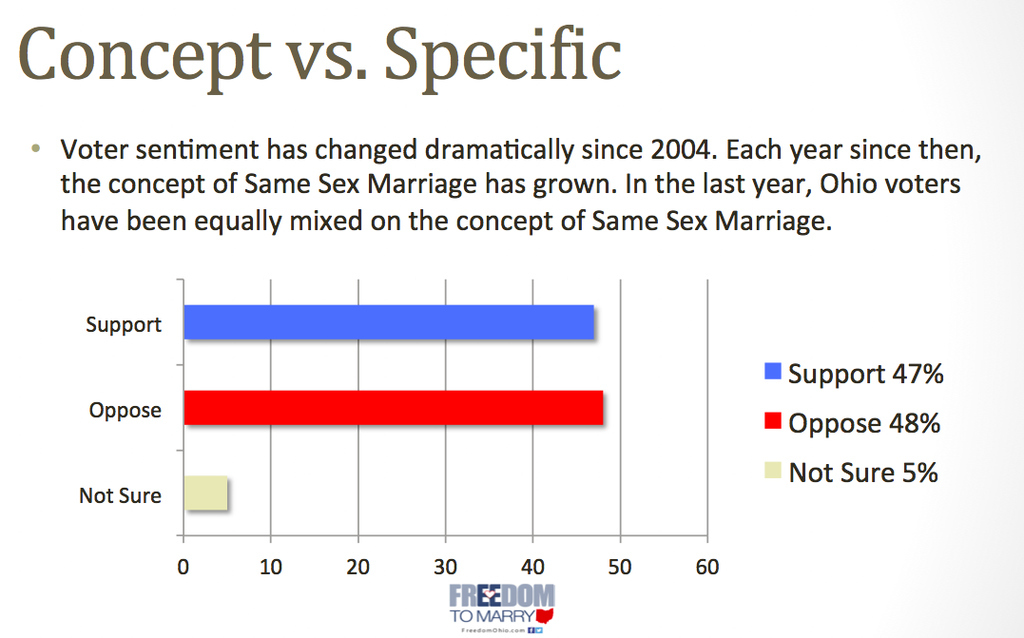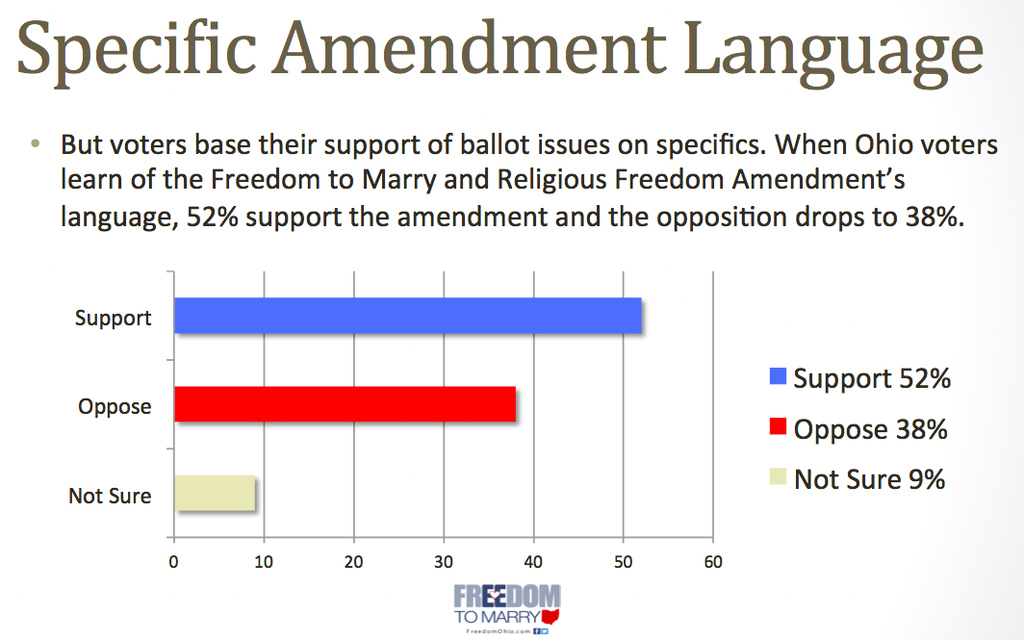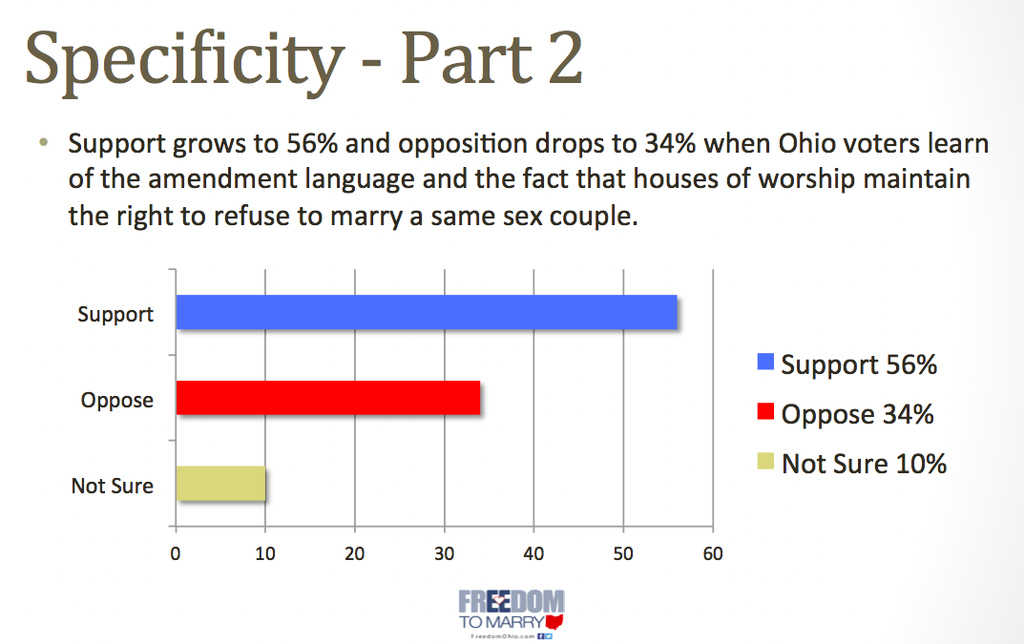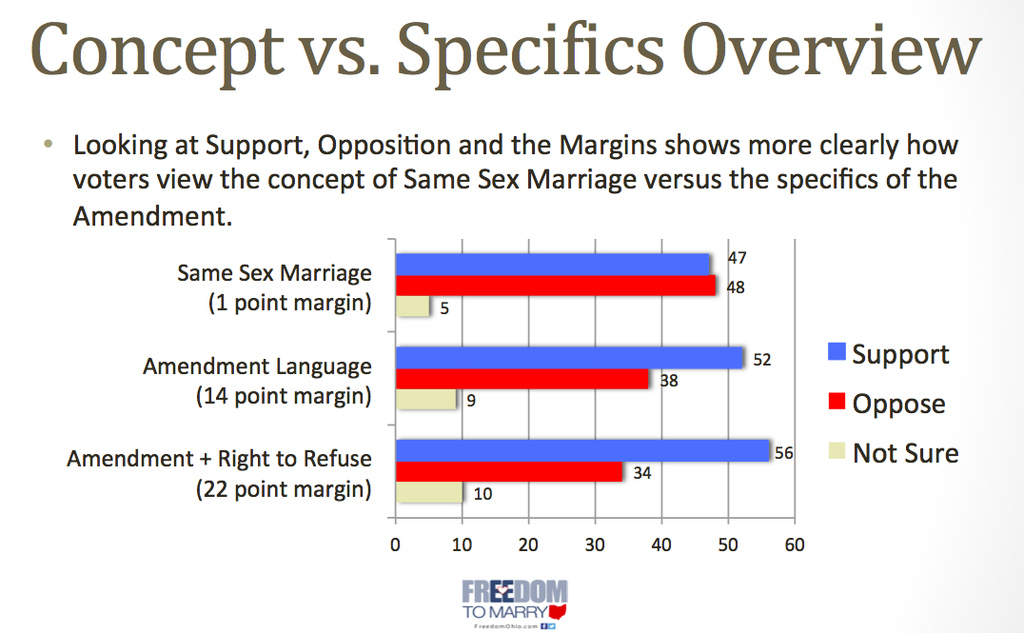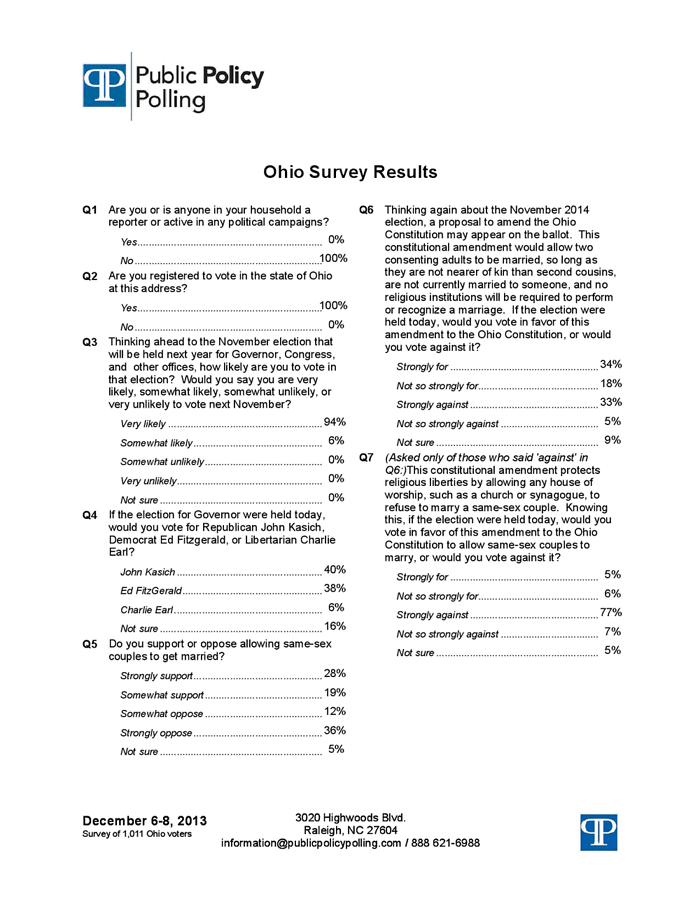
WASHINGTON — Only about one-third of Ohioans would oppose an amendment allowing same-sex couples to marry in the state if informed about what the amendment means, polling conducted for a group pushing for marriage equality in the Buckeye State shows.
Freedom to Marry Ohio — not affiliated with the national group, Freedom to Marry — is unveiling the polling showing a majority of voters support a marriage equality amendment at a news conference Thursday aimed at buttressing support for its effort to reverse the state's 2004 ban on marriage equality next year.
National groups, including Freedom to Marry and the Human Rights Campaign, as well as the statewide organization, Equality Ohio, have launched a more modest education campaign — Why Marriage Matters Ohio — that is looking toward going to voters in 2016 or later.
Less than 10 years ago, Ohio voters overwhelmingly amended their constitution to ban same-sex couples from marrying or obtaining similar protections, as in civil unions.
Ian James, through his organization, Freedom to Marry Ohio, is releasing polling today that shows the 62-38 passage of the amendment banning same-sex couples from marrying has nearly reversed in the past nine years.
The survey, conducted by Public Policy Polling of 1,011 Ohio voters from Dec. 6-8, 2013, concluded that 52% of voters would vote in favor of an amendment that "would allow two consenting adults to be married, so long as they are not nearer of kin than second cousins, are not currently married to someone, and no religious institutions will be required to perform or recognize a marriage." Thirty-eight percent would oppose the amendment, and nine percent were undecided.
Of the 38% who would vote against the amendment, however, PPP asked a follow-up question: "This constitutional amendment protects religious liberties by allowing any house of worship, such as a church or synagogue, to refuse to marry a same-sex couple. Knowing this, if the election were held today, would you vote in favor of this amendment to the Ohio Constitution to allow same-sex couples to marry, or would you vote against it?"
More than 10% of those initially against the amendment said that information would change their vote to supporting the amendment, which brought the total support up to 56%. Five percent of those initially against the amendment moved into the undecided camp, bringing the total undecided to 10%. Eighty-four percent of those opposed did not change their position with that information, bringing the total opposition down to 34%.
"In this latter scenario where voters have the amendment language and the 'right to refuse' language, support for the amendment grows to 56%, while opposition drops to 34%. The amendment language and 'Right to Refuse' moves voters across all demographic groups to support, and demonstrates the importance of specificity in amendment language versus concept," Jim Kitchens and Bob Carpenter, pollsters who conducted a "peer review" of the PPP poll, wrote in a memorandum to James.
From Freedom to Marry Ohio:

